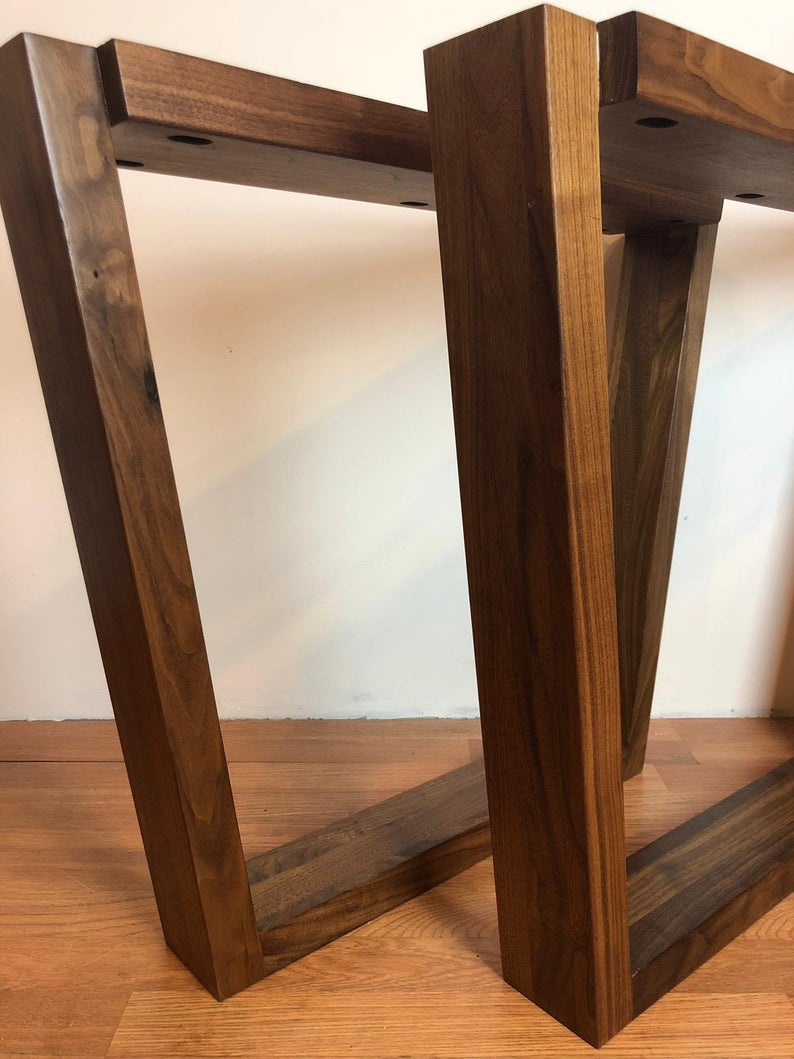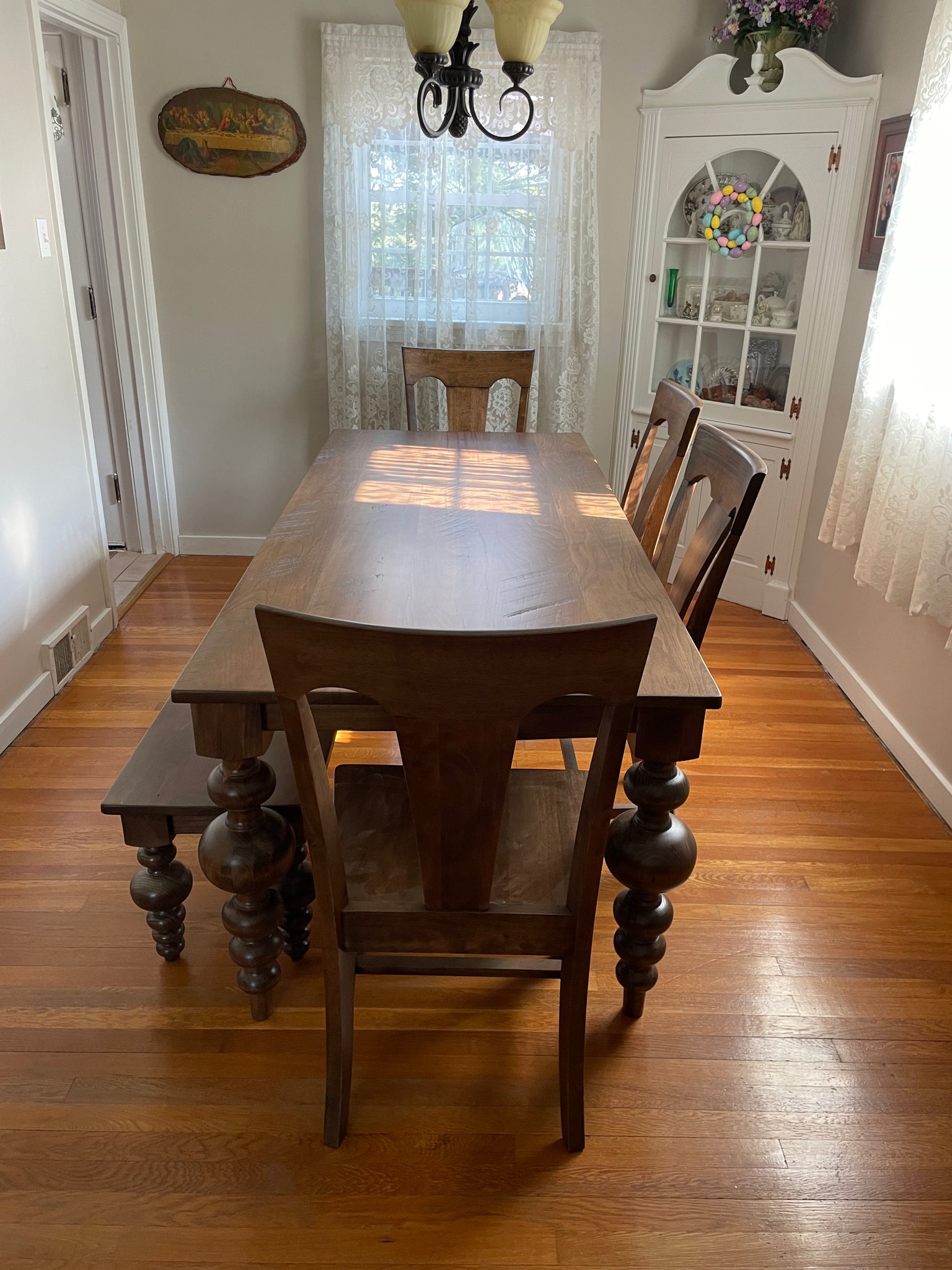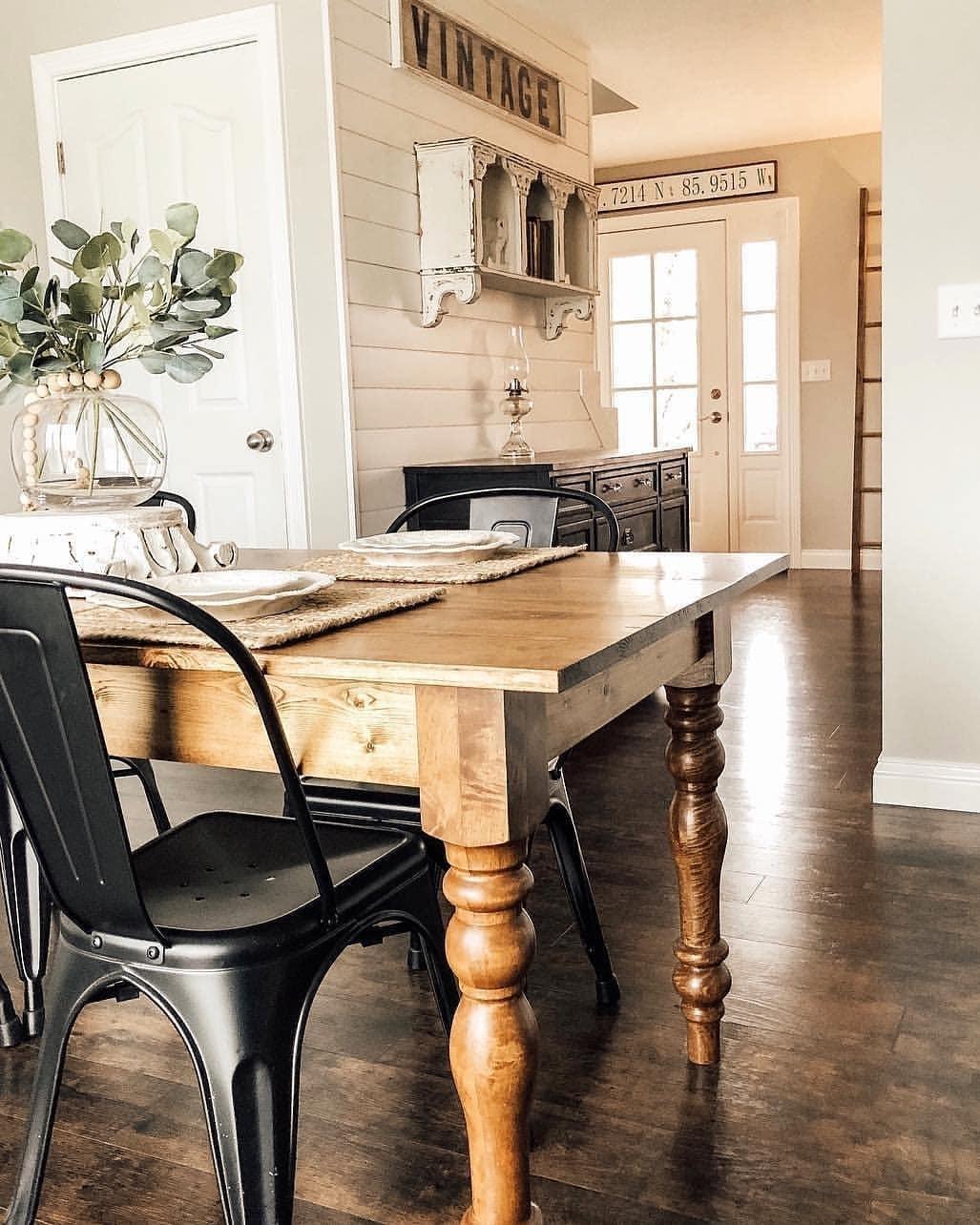Checking Out the Different Kinds Of Table Legs Timber for Your Eating Space
The option of eating table legs timber can profoundly affect both the visual and functional qualities of your dining room. Solid timber choices, such as oak and walnut, offer a classic look with unrivaled durability, while engineered wood options provide ingenious designs that mimic the splendor of natural grains. Additionally, the growing pattern of recovered wood presents a lasting component that allures to eco mindful consumers. As we discover these different options, it ends up being necessary to consider not only the aesthetic allure but additionally the useful effects of each material choice. What factors should lead your decision?
Strong Timber Options

In addition, strong timber is renowned for its strength and longevity. Unlike engineered materials, strong wood is less prone to bending and damage over time when appropriately kept. This makes it an excellent option for families or those that frequently host events. Each piece of solid wood is distinct, showcasing private features that contribute to the appeal and character of the dining table.
Furthermore, solid timber can be finished in various ways, varying from all-natural oils to tarnished surfaces, allowing house owners to personalize their furniture to match their decoration. In recap, picking strong timber for eating table legs not only guarantees structural stability but additionally enhances the aesthetic allure of the eating location, making it a rewarding investment for any home.
Engineered Timber Alternatives

Plywood, built from several layers of wood veneer, is stable and specifically strong, making it a superb selection for dining table legs. Its split structure allows it to endure adjustments in humidity and temperature level better than traditional strong timber. MDF, on the other hand, supplies a smooth surface for painting or veneering, allowing designers to achieve a sleek look while keeping architectural honesty.
When selecting engineered timber options, it is vital to consider the desired use and desired visual. These materials not just improve the functionality of eating spaces but additionally permit for better style adaptability, making certain that contemporary and traditional styles can exist together harmoniously.
Reclaimed Wood Includes
Reclaimed timber offers an unique mix of sustainability and personality, making it an increasingly prominent choice for eating table legs. Sourced from old barns, factories, and other structures, recovered timber personifies a background that brand-new products just can not replicate. Each item brings its own story, noted by distinct flaws, knots, and varying grain patterns, which add to a table's special aesthetic allure.
In enhancement to its aesthetic appeal, redeemed wood is an environmentally pleasant alternative. By repurposing previously utilized materials, it minimizes the need for new lumber, hence assisting to decrease and save woodlands waste. This aligns with a growing customer choice for lasting techniques in furnishings.
Additionally, redeemed wood is usually a lot more long lasting than recently collected timber because of its age. The all-natural drying procedure that reclaimed timber undertakes results in a denser and stronger product, making it less prone to warping and splitting. This improves the long life of dining tables, allowing them to hold up against the rigors of daily her response use.
Softwood vs. Wood
When choosing eating table legs, recognizing the differences in between softwood and wood is essential for attaining both visual and useful goals. They her response usually display an even more rustic appearance, making them suitable for casual or country-style eating rooms.
On the various other hand, hardwoods, sourced from deciduous trees like oak, maple, and cherry, are renowned for their thickness, strength, and toughness. The detailed grain patterns and rich colors of hardwoods supply a classic and sophisticated appeal, making them suitable for formal eating settings. While woods have a tendency to be more pricey and much heavier, their resilience against deterioration frequently justifies the investment.
Ultimately, the option in between softwood and hardwood for eating table legs should align with your style vision, usage needs, and spending plan, making certain that your dining room shows your personal design while continuing to be functional over time.

Therapies and surfaces
The aesthetic allure and longevity of dining table legs can be substantially enhanced with various coatings and therapies. These processes not only safeguard the timber from damage but also raise its appearance, permitting it to enhance diverse indoor styles.
One typical therapy is staining, which passes through the wood and boosts its natural grain while including shade. Discolorations offer a rich, stylish look, allowing homeowners to match their furniture with existing design. Alternatively, clear surfaces such as polyurethane or varnish produce a protective layer without altering the timber's initial hue, ensuring resilience against deterioration.
Furthermore, natural oils, like tung or linseed oil, nurture the timber and provide a refined luster, all while being environment-friendly. These oils allow the surface to take a breath, preventing dampness buildup and potential warping.
For those looking for a rustic appeal, troubled or weathered finishes can be put on produce an aged look, including character to the piece. Eventually, the choice of finishes and treatments depends upon individual preference, desired looks, and the particular wood type, making it important to consider these variables when picking table legs for your area.
Verdict
Strong woods, crafted alternatives, and redeemed options each deal distinctive benefits, providing to various choices and needs. Eventually, the choice of timber kind must straighten with wanted design, durability, and environmental factors to consider, boosting the general eating experience.
The selection of eating table legs wood can exceptionally affect both the useful and aesthetic high qualities of your eating room - Dining Table Legs Wood. Solid wood options, such as oak and walnut, offer a classic look with unequaled resilience, while engineered visit site wood options use innovative layouts that resemble the splendor of all-natural grains. Strong timber uses a timeless top quality that can boost the general design of an eating space. Each piece of solid timber is one-of-a-kind, showcasing specific attributes that include to the beauty and character of the dining table
Furthermore, recovered wood is frequently a lot more resilient than freshly gathered wood due to its age.